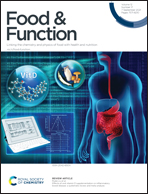Advances in static in vitro digestion models after the COST action Infogest consensus protocol
Abstract
In vitro digestion models are essential to predictively evaluate the bioaccessibility and bioactivity of food molecules or natural products. Dynamic models better simulate the gastrointestinal conditions as they reproduce similar physiological environments. Despite this, static methods, also known as biochemical methods, represent a simple and useful approach for the study of different types of molecules, with a broad applicability in the nutritional, pharmaceutical, and toxicological fields. In addition, static models can be validated, avoiding the disadvantage of a difficult reproducibility of dynamic in vitro systems and inter-individual variations of in vivo experiments. A crucial point in the standardization of static models was the COST Action Infogest in 2014, which elaborated an international consensus static digestion method to harmonize experimental conditions and has general guidelines, thus allowing the comparison of studies and data. The aim of our review is to underline the impact of the Infogest consensus method and the development and evolution of in vitro static methods in the following years, with a focus on food applications.



 Please wait while we load your content...
Please wait while we load your content...